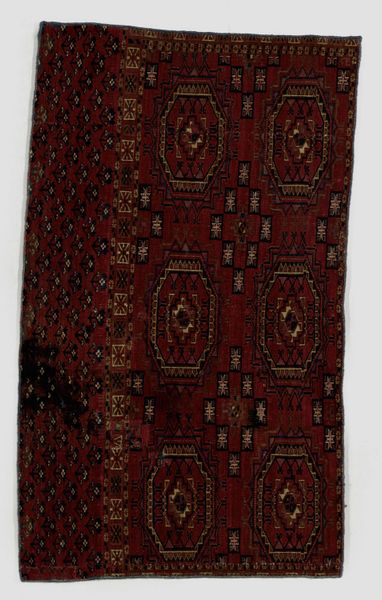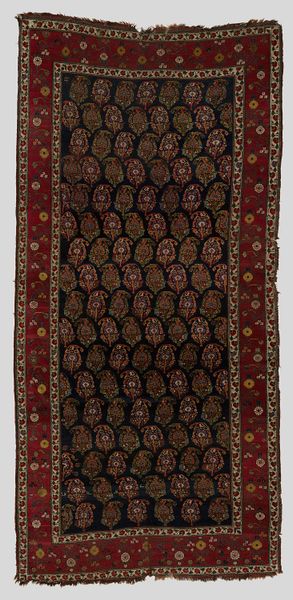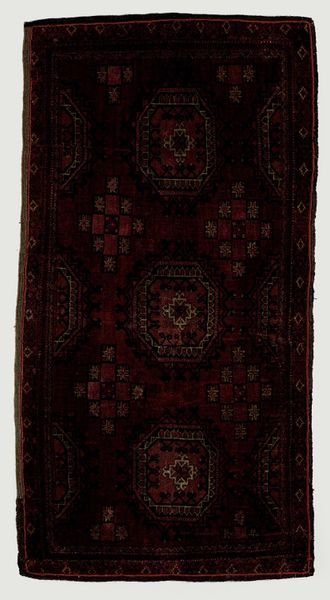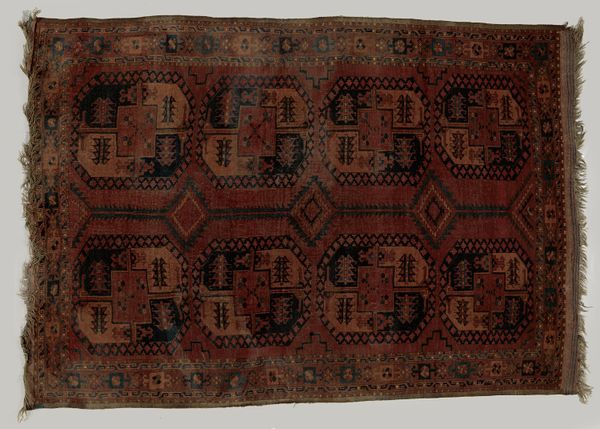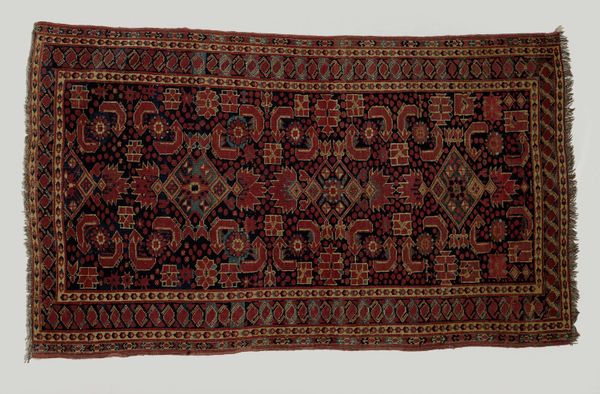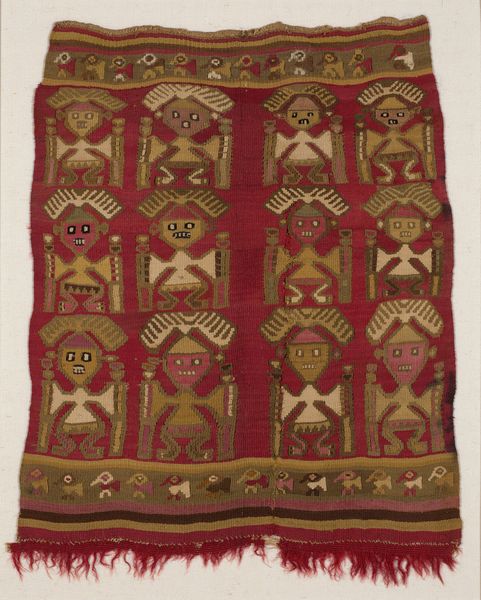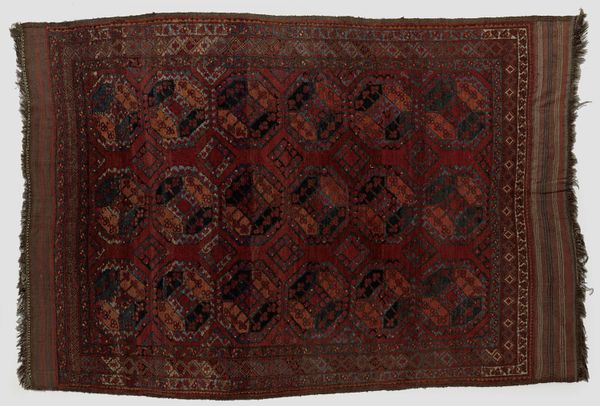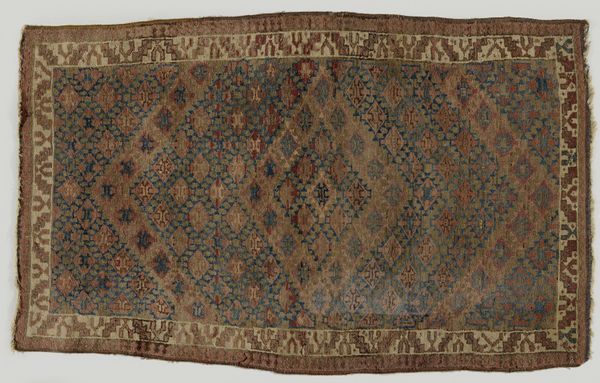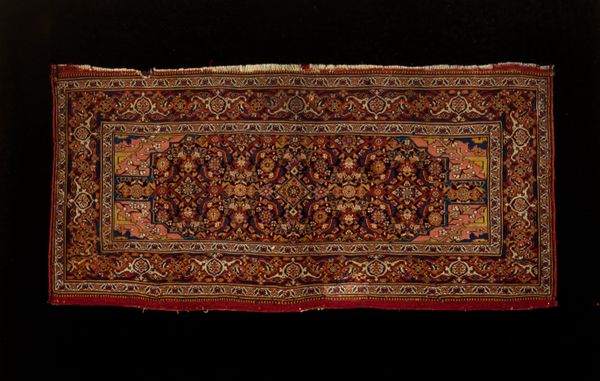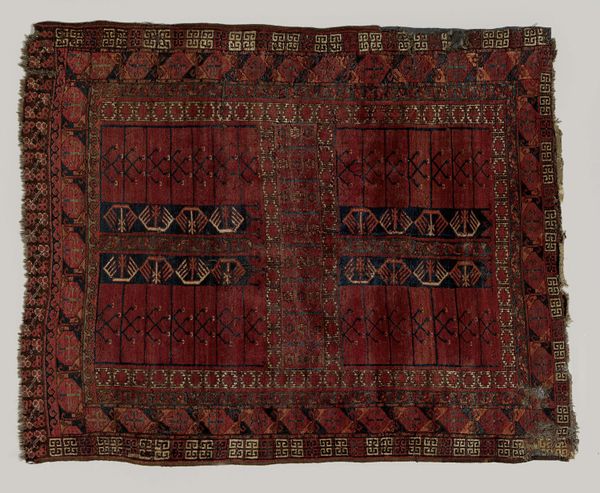
weaving, textile
#
natural stone pattern
#
naturalistic pattern
#
weaving
#
textile
#
fashion and textile design
#
geometric pattern
#
hand-embroidered
#
geometric
#
repetition of pattern
#
pattern repetition
#
islamic-art
#
textile design
#
imprinted textile
#
layered pattern
Dimensions: height 89 cm, width 131 cm
Copyright: Rijks Museum: Open Domain
This Tentzakvoorblad, or tent front, was made by the Ersari people, an ethnic group with origins in Central Asia. Weavings like this acted as portable architecture for nomadic people. This particular piece is rich with symbolic meaning and the color red dominates which can represent joy, courage, and protection. Notice the design and motifs employed. Geometric shapes and stylized animal figures create a unique visual language specific to the Ersari culture. These symbols, passed down through generations, served as markers of identity and tribal affiliation. These weavings were traditionally crafted by women, and they became a powerful expression of their cultural identity. The act of weaving was not merely a craft but a deeply personal and social practice. As these women wove, they wove stories of their lives, histories, and worldviews into the fabric. The Tentzakvoorblad, therefore, transcends its functional purpose, it stands as a testament to the resilience, creativity, and cultural richness of the Ersari people.
Comments
No comments
Be the first to comment and join the conversation on the ultimate creative platform.

